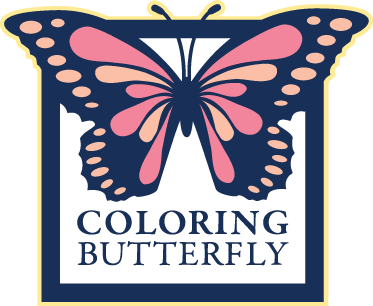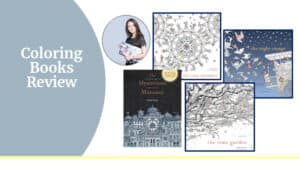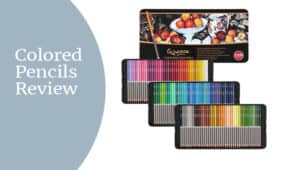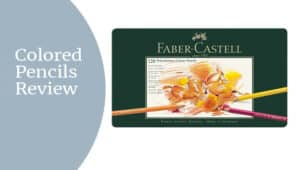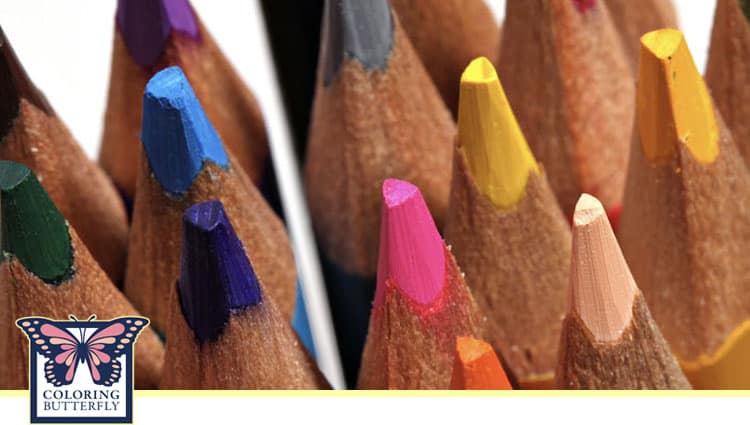
There is a difference between student-grade and artist-grade colored pencils.
The following is a brief introduction to the types of colored pencils that are available for adult coloring. I provide the information as a way to get you started. I would like to suggest the following article to give you an in-depth look at how to buy colored pencils and find links to 50+ reviews of different pencil brands. See the article, “Buying Colored Pencils? Everything You Need Know (Guide).”
Table of Contents
ToggleStudent- vs. Artist-Grade Colored Pencils
Colored pencils are the foundation for adult coloring. There are many choices, and the choices are based on many factors that range in core pigment, color vibrancy, hardness vs. softness, wax vs. oil, performance, cost and more. Let’s take a quick look at some differences between student-grade and artist-grade colored pencils.
- Student-Grade (Beginner/Novice). These colored pencils are usually wax-based, have a more rigid core, are more durable and are easier to sharpen. This pigment core blend is fundamental, less colorful and among the least expensive to buy. The pencil construction is hit and miss and often sub-par, and the packaging is very generic. Perfect for children who can be rough with coloring projects. This can also be a good choice for an adult who is considering adult coloring and wants to explore the hobby. Pencils in the category would be Zenacolor, Star-Joy, Soucolor, and Markart.
- Student-Grade (Experience to Advanced). These pencils can be wax- or oil-based and a step-up from the beginner/novice pencils. These colored pencils are meant for individuals who want to do more with coloring. The pigment cores are often softer and give the colorist more control in coloring skills (e.g., layering, blending, shading). The core pigments are vibrant and provide a full-color range that will allow you to color almost any theme in a coloring book. The pigment recipe is more advance with the characteristics needed for this price range and skill level.
The material used in pencils is noticeably upgraded from pencil shaft to containers (e.g., tin, cases, wood) and presentation. The cost range of these pencils ranges from low-moderate to moderate-expensive. You will have a range of sizes in pencil sets. Some of the pencil brands will have open stock options. This is the level of pencil I usually will recommend for the beginner/novice adult colorist. Why, as your skills grow, you will quickly develop into being able to use and enjoy the capabilities of these colored pencils. Pencils in this category would be Prismacolor Premier, Derwent Procolour, Castle Art Supplies, Arteza Expert, and Black Widow.
- Artist-Grade/Professional. These pencils are for individuals who have experience working with all media types (e.g., watercolor, colored pencils, pastels, and more). They have an advanced understanding of the coloring techniques you will use in adult coloring (e.g., blending, shading, layering). You will often see these people on YouTube teaching you and me how to color. The artist-grade pencils are a step from the student-grade (experienced/advanced). These pencils are very soft, have excellent color coverage, and have exceptional blending and laying capabilities. You have extensive choices for color. All the brands have open stock.
The brands all have light-fast ratings. Lightfastness is a property of a colorant such as dye or pigment that describes how resistant to fading it is when exposed to light. The lightfastness has a lot to do with the higher cost of the pencils. The presentation and packaging of these pencils are charming to elaborate. The price of these pencil sets ranges from moderate to expensive. An adult colorist can get into this level of coloring set, but it is usually a choice, not a requirement. Pencils in this category would be Caran D’Ache Pablos, Farber-Castell Polychromos, Derwent Lightfast, Caran D’Ache Luminance, and Holbein.
Types of Colored Pencil Cores
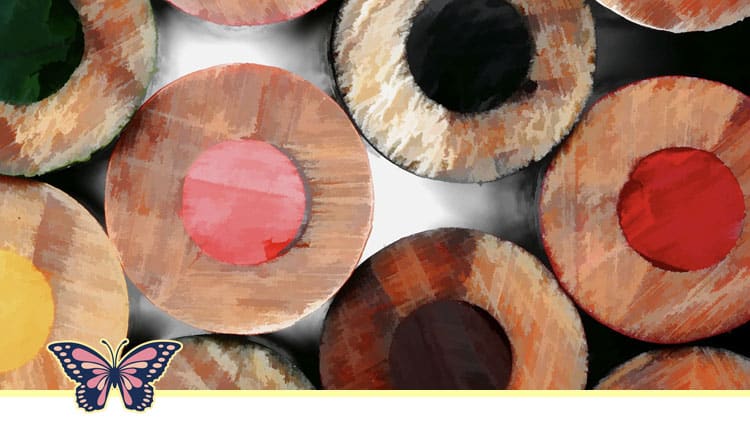
Colored pencil leads/cores are a combination of pigment, gum binder, wax, filler (e.g., chalk or clay) and wax that is layered in a wood shaft usually made of cedar. Colored pencils usually come in wax-based or oil-based binders, and the binder determines the characteristics of the pencil’s performance and capabilities. Manufacturers create different recipes for student-grade and artist-grade colored pencils. Colored pencils come in three different types.
- Oil-based colored pencils are medium soft compared to wax-based pencils and last longer. The core pigment consists of a vegetable-based binder that holds the pigment together and is resistant to water. Oil-based pencils require a little more pressure to get the same coverage obtained with wax-based colored pencils. Oil-based pencils do not blend or layer as quickly as wax-based pencils. The firmer core also means that the lead is less like to break. One of the drawbacks to oil-based pencils is that they are prone to smearing and harder to erase.
- Wax-based colored pencils are the softest pencil, provide full coverage and exhibit intense color. The core pigment is held together with a wax binder, and the right amount of wax gives the pencil a smooth texture and helps the pigment glide across the paper. They are known for their ability to blend and layer easily. Because of the softness, their core is more prone to break than other pencils. A common feature of wax-based colored pencils is wax blooms during layering. This white, milky-like glaze occurs as the wax binder rises through the pigment and settles on the paper’s surface.
- Water-soluble colored pencils are often referred to as watercolor pencils. Then can be used to create watercolor effects without water for drawings. The core contains an Arabic bind activated by water, so the pigment blends when water is added.
If you liked this article, please share it with others.
